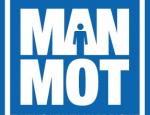My role
- About Us
New paper unites 'men' and 'inequality'
A short paper in a recent issue of the journal Social Science and Medicine has the potential to make a major contribution both conceptually and bibliographically to our understanding of male health inequalities. Unfortunately, unless you subscribe to the Elsevier journal in question you won't be able to read it.
'How might we understand men's health better' by Dr Maria Lohan of the School of Nursing and Midwifery at Queen's University Belfast brings together two distinct literatures — critical studies on men (or CSM as the author dubs it) and the broader study of inequalities in health.
The author distinguishes CSM which sees as 'the study of the gendered nature of men's lives', a social perspective, from men's studies with its more 'essentialist' emphasis on manhood. (She calls CSM 'the more sociologically-and feminist grounded wing of the men and masculinities literature'.)
She then looks at how the various theories of inequalities in health might be integrated with current CSM thinking. The explanatory approaches to inequalities that she considers are materialist/structuralist, cultural/behavioural, psychosocial and an approach she calls 'lifecourse' which combines the previous three in a causal narrative of male lives usually based around key events or milestones.
Lohan concludes that 'the vast majority of men's health research has heretofore drawn heavily on the concept of hegemonic masculinities to explain men's health status and health behaviours'. She sees this as 'useful and plausible' but believes it should and can, as her paper shows, be situated 'in a wider explanatory framework derived from inequalities in health'.
She argues that both future research and future health promotion interventions should 'take on board the wider range of health determinant variables.' She also, to the delight of men's health campaigners everywhere, advocates the contrary: that 'the inequalities literature should should start to include men's health issues in its work.'
Of course, there is little new here in terms of the issues and explanations. Men's health campaigners have been discussing these things for some time. But the classification and categorisation that Lohan brings and the conceptual framework that she provides make this both a readable introduction to the academic literature of men's health and a useful analytical tool for those more familiar with the material.
In This Section
Haringey health humour
I'd rather admit I love John Ryan!


 Donate to the MHF
Donate to the MHF
 Man MOT
Man MOT